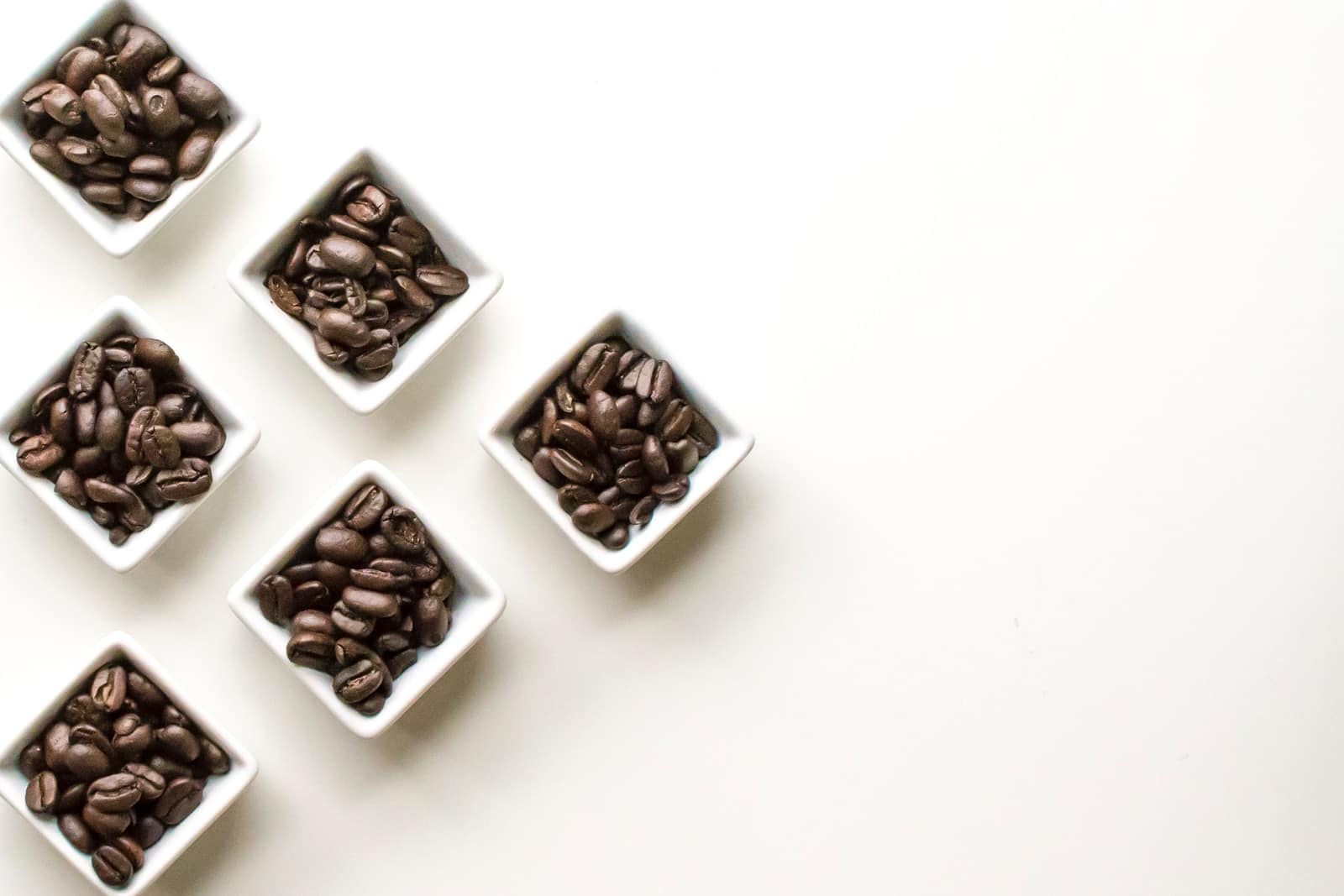The health advantages of coffee are rather astounding. Coffee has been demonstrated to boost cognitive function, metabolic rate, and athletic performance. Coffee consumption has also decreased the risk of dementia, Alzheimer’s, Parkinson’s, and type 2 diabetes. To top it all off, coffee consumers appear to live longer lives.
Table Of Contents
−- What is acrylamide?
- Is acrylamide dangerous?
- Which coffees contain acrylamide?
- How much acrylamide is in coffee?
- Are the amounts of acrylamide regulated?
- Is it dangerous to drink coffee?
- Should you give up coffee to avoid acrylamide?
- What other foods contain acrylamide?
- How to Reduce Your Coffee Acrylamide Intake
- Reduce your coffee consumption but be cautious when choosing an alternative.
- Take your time brewing your coffee- avoid instant coffee.
- Be mindful of the differences between brands.
- Dark roast has less acrylamide than regular roast.
- Take Arabica instead of robusta.
- Levels fall over time.
- Choosing brewed coffee over espresso
- A technology that could reduce acrylamide
- In conclusion
However, coffee has acrylamide, a potentially hazardous toxin, as one of its components. This article discusses if acrylamide in coffee is a cause for worry.


What is acrylamide?
You are exposed to acrylamide daily from smoking, passive smoke, personal care, and household items. Swedish scientists identified the chemical in various foods, including baked products and coffee, in 2002.
According to scientists, acrylamide in food is a byproduct of the Maillard reaction. This reaction happens when amino acids and sugars are heated above 248°F (120°C).
Acrylamide can also be found in caulk, some food packaging, adhesives, and cigarette smoke.
According to the American Cancer Society, acrylamide is the natural result of high-temperature cooking of some starchy foods. Acrylamide is also a byproduct of the roasting process in coffee beans.
Is acrylamide dangerous?
Animal studies have also frequently demonstrated that consuming large levels of acrylamide can cause cancer.
On the other hand, animal dosages have been 1,000–100,000 times higher than the levels people are exposed to through food.
Acrylamide is metabolized differently in humans, so you are exposed to a smaller chemical dosage when the body breaks it down.

Which coffees contain acrylamide?
Acrylamide is also found in coffee substitutes, such as cereal and chicory root coffees that have been roasted. However, the quantity of acrylamide in these different varieties of coffee might vary. We will go through these variances in depth in the following part.
How much acrylamide is in coffee?
Researchers discovered that quick coffee has 100 percent more acrylamide than freshly roasted coffee, whereas coffee substitutes have 300 percent more.
The typical quantities of acrylamide discovered in each variety of coffee are as follows:
- Freshly roasted coffee has around 179 mcg per kilogram.
- Each kilogram of instant coffee contained 358 mcg.
- Coffee alternatives contained 818 mcg per kilogram.
The concentration of acrylamide in coffee varies substantially. The least quantity is likely found in well-roasted, dark, fresh coffee beans.
Are the amounts of acrylamide regulated?
The Food and Drug Administration of the United States controls the quantity of residual acrylamide in certain materials that come into contact with food. But, there are presently no rules controlling the presence of acrylamide in food.
Is it dangerous to drink coffee?
Coffee use has also been related to various additional health advantages, including a longer lifespan and a lower chance of developing various illnesses.
Studies have also discovered a link between coffee use and a decreased risk of some diseases, including
- oral cancer
- skin cancer
- endometrial cancer
- liver cancer
- prostate cancer
- leukemia
According to the researchers, people who consumed three or four cups of coffee daily benefited the most. According to the Food and Drug Administration (FDA), adults should restrict their coffee consumption to four or five cups daily.
Should you give up coffee to avoid acrylamide?
Given its possible health benefits, coffee is not something you should avoid. Coffee also includes a variety of additional compounds that may be good for your health. So you don’t have to stay off it.
While it is not feasible to obtain acrylamide-free coffee, the coffee industry is working on practical measures to limit its prevalence.
What other foods contain acrylamide?

A minor quantity of acrylamide may be present in cookies. Acrylamide may be found in a wide range of cooked and baked meals. When some types of starchy foods are cooked at high temperatures, small amounts of acrylamide are produced. The Maillard reaction is the name given by scientists to this chemical process.
Acrylamide may be found in a variety of foods, including
- breakfast cereals
- baked items like bread and cookies
- potato chips
- fried potatoes
How to Reduce Your Coffee Acrylamide Intake
While roasted coffee beans have a very high acrylamide concentration, brewed coffee accounts for just approximately 6% of an average American’s dietary acrylamide consumption. However, in nations where coffee use is higher and consumption of several other high acrylamide foods (like French fries) is lower, coffee as an acrylamide source in the consumer’s diet can be quite significant.
If you have Swedish blood in your veins and require many cups of coffee every day, you may have asked if there is a technique to minimize the acrylamide levels in coffee. Acrylamide has even been identified as a probable carcinogen in humans.
The good news is that there are numerous methods for lowering your acrylamide consumption from coffee.
However, before you read on, remember that some charts comparing acrylamide levels in other consumables only show figures for ground or powdered coffee, not brewed coffee. This is because ground coffee beans have a substantially higher acrylamide concentration than brewed coffee.
Reduce your coffee consumption but be cautious when choosing an alternative.
One easy strategy to limit your consumption of coffee’s hazardous chemicals is consuming fewer cups daily. First, however, it would be best if you avoided coffee substitutes that have been roasted. Acrylamide is produced when carbohydrate-containing compounds are roasted or otherwise cooked to high temperatures.
Become a tea aficionado if you are addicted to the soothing feel of a cup of hot stuff. Acrylamide is produced when carbohydrate-containing compounds are roasted or otherwise cooked to high temperatures. Tea, especially black tea, is produced by a low-temperature drying process. Therefore it does not contain substantial quantities of acrylamide.
Take your time brewing your coffee- avoid instant coffee.
If you wish to lower the number of carcinogenic elements in your regular cup of coffee, brewing it may be beneficial. Although instant coffee appears more appealing since it saves time and effort, it has been shown to have higher acrylamide than brewed coffee.
Be mindful of the differences between brands.
Regarding acrylamide levels in coffee, there seem to be substantial variances between brands. According to FDA statistics, on average, Folgers and Taster’s Choice had the highest amounts — in both instant and non-instant products. Yuban Coffee stood out in this investigation for having an extremely low acrylamide concentration. However, it is worth emphasizing that the FDA only examined a small number of samples and that there might be substantial lot-to-lot variance.
Dark roast has less acrylamide than regular roast.
According to estimates based on FDA data, dark-roasted beans seemed to have lower amounts of acrylamide. Collaborative research done by Nestlé Product Technology and European Commission confirms this conclusion. The researchers who conducted the study discovered that light-roasted coffee beans have greater acrylamide levels than dark-roasted beans. Why is this so? According to the study, acrylamide is generated at the start of the coffee bean roasting cycle. It drops precipitously after the procedure due to greater elimination rates.
Take Arabica instead of robusta.
Aside from the taste, you now have another incentive to buy the more costly bean. According to the recommendations, robusta beans have “slightly higher” amounts. They did not say how much it was, but it is probably more than a little sum for them to bother discussing it.
A few websites have accused Starbucks of slipping in robusta. The only “proof” they provide to back that claim is that the caffeine concentration per ounce is far higher than coffee from McDonald’s, Burger King, Dunkin Donuts, etc. Because robusta naturally contains roughly 80% more caffeine than Arabica, these people accuse Starbucks of switching things up.
Levels fall over time.
Again, the FDA did not specify how much they would reduce but stated that acrylamide levels in coffee would drop over long-term storage.
Is this to say that you should keep the bags in your pantry for several months, at best, before brewing them? Perhaps, but further study is needed to be certain.
Another item to consider is antioxidants and how they may deteriorate over time. These are the health benefits of drinking coffee every morning, as you know. Studies have discovered that coffee is the most abundant natural antioxidant in the Western diet, not cabbage salads or other superfoods (which the average American does not consume regularly).
Chlorogenic acid is the principal antioxidant source in coffee. However, unlike most vegetables and fruits, raw beans contain fewer antioxidants than roasted beans. A significant amount is produced during the roasting process when the chlorogenic acid is broken down, resulting in additional powerful antioxidants.
No evidence eating acrylamide causes damage in modest doses. If you are worried, however, there are a few things you may take to reduce your exposure:
- If you smoke, attempt to quit and limit your exposure to secondhand smoke.
- Avoid frying as much as possible since it creates the highest acrylamide of any cooking method.
- Avoid burning or charring meals on the grill.
- Limit your consumption of toasted bread.
- When feasible, boil or microwave.
- Keep potatoes out of the refrigerator.
- Allow your bread dough to prove for a longer period – yeast fermentation decreases the quantity of asparagine in the dough, resulting in less acrylamide formation.
- Choose dark roasted coffee over instant coffee and coffee substitutes.
It is not easy to completely prevent acrylamide. However, you may do a few things to limit your acrylamide consumption.
Choosing brewed coffee over espresso

Research on acrylamide and women’s breast cancer risk was published in the respected Journal of the American Medical Association (JAMA) over a decade ago.
The research was based on Swedish women; data on 43,404 people were analyzed from 1991 to 2002. Their average age at the start was 39.
During that time, there were 667 breast cancer cases out of 43,304 women, or around 1.5 percent. All of the women’s lifestyles and nutritional habits were examined.
When it comes to how much acrylamide they consumed, this is where it came from:
- 54% from coffee
- 9% from crisp bread
- 12% from fried potatoes
But, regardless of the meals or drinks they consumed, how did this affect their breast cancer rates?
A technology that could reduce acrylamide
Over a decade ago, restaurant chains such as Wendy’s, KFC, McDonald’s, and Burger King resolved to post warnings concerning acrylamide in french fries at their California locations. McDonald’s in the United Kingdom has also implemented techniques to limit the chemical’s presence, like switching to potatoes with less starch or cooking at lower temperatures.
Acrylaway, the company’s enzyme, is offered in granular and liquid form and is applied to raw materials. Acrylaway aids in converting an amino acid that yields acrylamide into a naturally occurring one that does not mean when food is roasted, baked, or fried.
Many coffee firms have reduced acrylamide the old-fashioned way: by keeping their beans for longer periods or roasting them at lower temperatures. But, according to Nielsen, such tactics can jeopardize flavor and texture. But, Novozymes claims their technology may improve the coffee flavor by removing the bitterness commonly associated with low-quality roasts.
In conclusion
Coffee includes a variety of chemicals that have been related to health benefits. Because these benefits exceed the possible bad consequences of acrylamide, there is no need to quit drinking coffee if you love it.
Disclaimer: This post contains affiliate links, which means I may receive a small commission, at no extra cost to you, if you make a purchase using these links. Remember to support us by purchasing through the Amazon/Walmart/Impact Radius links provided. Last update on 2024-04-25 / Affiliate links / Images from Amazon Product Advertising API
Disclosure: No compensation or free products were received in exchange for writing this review.

Editorial Staff
The editorial staff at Crazy Coffee Crave is a team of coffee enthusiasts & Baristas who enjoy the one thing we all think about as soon as we get up in the morning. Trusted by thousands of readers worldwide.





